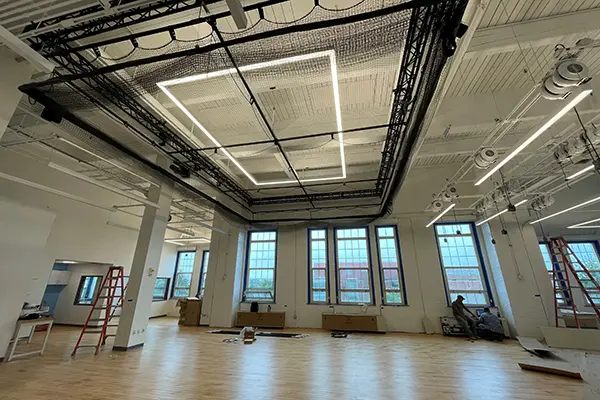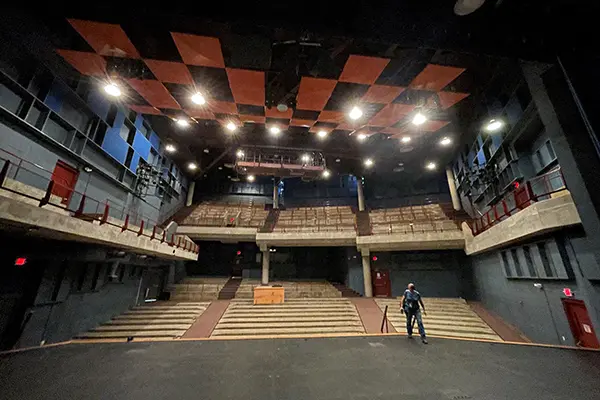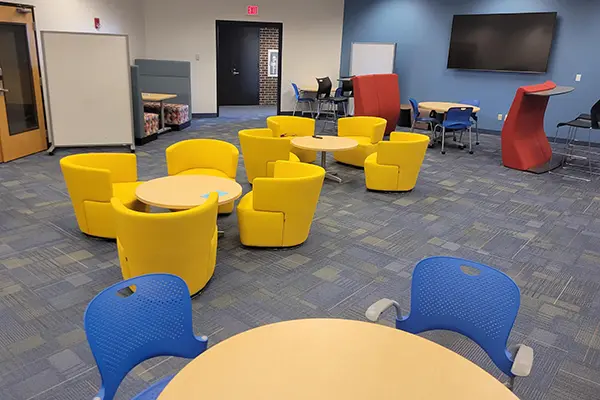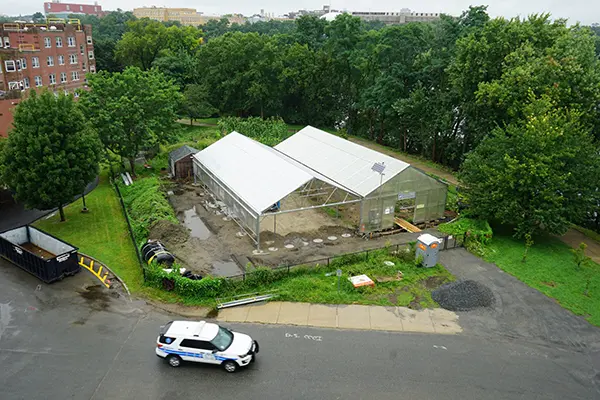Southwick Hall Project, Durgin Concert Hall Renovation Highlight Summer Facilities Work
 Image by Ed Brennen
Image by Ed Brennen
08/30/2023
By Ed Brennen
In a room where students used to send basketballs sailing through the air, drones are about to take flight.
Work is nearly complete on the new Lowell Advanced Robotics Initiative (LARI) Laboratory, a 3,700-square-foot facility on North Campus that will support UMass Lowell’s growing interdisciplinary robotics program. The lab is located on the fourth floor of Southwick Hall, in a high-ceilinged space that served as a basketball gymnasium for Lowell Textile Institute students a century ago.
The $6.8 million project at Southwick, which also includes new offices for the Chemical Engineering and Mathematics & Statistics departments, is among scores of projects – some big, some small – that Facilities Management tackled across campus while students were away this summer.
Here are a few of the highlights:
On South Campus, a major renovation is underway at Durgin Concert Hall, which will reopen for performances in the spring.
 Image by Ed Brennen
Image by Ed Brennen
The concert hall, which opened in 1976 in the piano-shaped building, will also get fresh paint and new acoustic paneling along the front of the balconies.
According to Project Manager Heide Messing, Durgin used to rely on a portable sound system. The new permanent system, along with the additional acoustic paneling and freshly upholstered seats, “will make a huge difference in the performances and the sound, benefiting students,” she says.
During the renovation, a temporary 10-foot wall will be installed in the Durgin Hall lobby to protect artwork hanging near the main entrance.
A separate project to improve and beautify the plaza outside Durgin’s main entrance, including repairs to the sidewalk, is expected to begin next spring.
Over on the South Campus field, next to the Schueller Observatory, the foundation and fencing are in place for a new weather station, from which researchers from the Kennedy College of Sciences will soon be able to continuously record meteorological conditions on campus.
 Image by Maria Morrissey
Image by Maria Morrissey
On the nearby outdoor basketball courts, students will soon find new hoops and repairs to the pavement.
Over on East Campus, behind Donahue Hall, the university’s urban agriculture greenhouse is about to double in size, from 1,800 square feet to 3,600 square feet, thanks to the installation of an adjoining twin polycarbonate structure.
The Office of Sustainability manages the greenhouse in partnership with Mill City Grows, a Lowell-based nonprofit. The expansion will allow Mill City Grows to significantly increase its production capacity to support the local community, according to Sustainability Director Craig Thomas.
At Fox Hall, the university’s largest residence hall, students will find new and improved hangout and study spaces on the third floor. In addition to new furniture, a former Residence Life office has been converted into a small seminar room that can also be used for studying.
 Image by Ed Brennen
Image by Ed Brennen
“We were able to get rid of the window air-conditioning units and install new glass to bring the historic feel back to the old windows,” says Maria Morrissey, project executive for Facilities Management.
While Southwick included a gymnasium on the fourth floor when it opened in 1903, the space was eventually divided into several classrooms with drop ceilings. Those classroom walls and drop ceilings have been removed to re-create an open space for the LARI Lab, where faculty from the Miner School of Computer & Information Sciences and the Mechanical & Industrial Engineering and Electrical & Computer Engineering departments can conduct robotics research and development.
The lab features several flexible workstations and several testing areas for both drone and ambulatory robot research. In the middle of the lab is a 600-square-foot drone testing area that is 18 feet high, with retractable netting to protect researchers from the flying objects.
There is also a 32-foot-long “robot runway” for testing, as well as a kitchen – complete with real (but non-operational) appliances such as a refrigerator and stove – that robots can be trained to interact with.
Across the hall, two classrooms have been converted into graduate student spaces, and another has been turned into a robotics lab for a faculty member.
